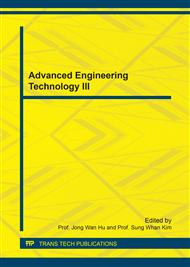p.630
p.636
p.645
p.650
p.657
p.662
p.667
p.675
p.681
Use of Bioinformation Technologies in Carbon Cycle Assessment in Managed Technogenic Forests in Primorskiy Krai
Abstract:
The paper describes the results of bioinformation technologies study in assessment of carbon cycle in managed technogenic forests in Primorskiy Krai. Therefore, the aim of the research was the assessment of carbon cycle in managed technogenic forests using bioinformation technologies. Computation was performed in the «ROBUL» program. Analysis, generalization and systematization of literary evidence suggest that a significant number of publications are devoted to various aspects of the carbon budget of the forests in Russia. The types of forest ecosystems in Primorskiy Krai have been identified, and the main forestry operations in this region were analyzed and described. It was found that in the global carbon cycle the forests play an important role, as they are characterized by the largest phytomass supply. However, the growth of anthropogenic activities leads to disruption of the balance of the carbon cycle on the Earth. The results of the research show decrease of carbon reserve in the study area in 2015 compared to 2003. With technogenic influence increase there is a gradual increase of carbon dioxide emissions into atmosphere for managed forests in Primorskiy Krai.
Info:
Periodical:
Pages:
657-661
Citation:
Online since:
June 2017
Keywords:
Price:
Сopyright:
© 2017 Trans Tech Publications Ltd. All Rights Reserved
Share:
Citation:


